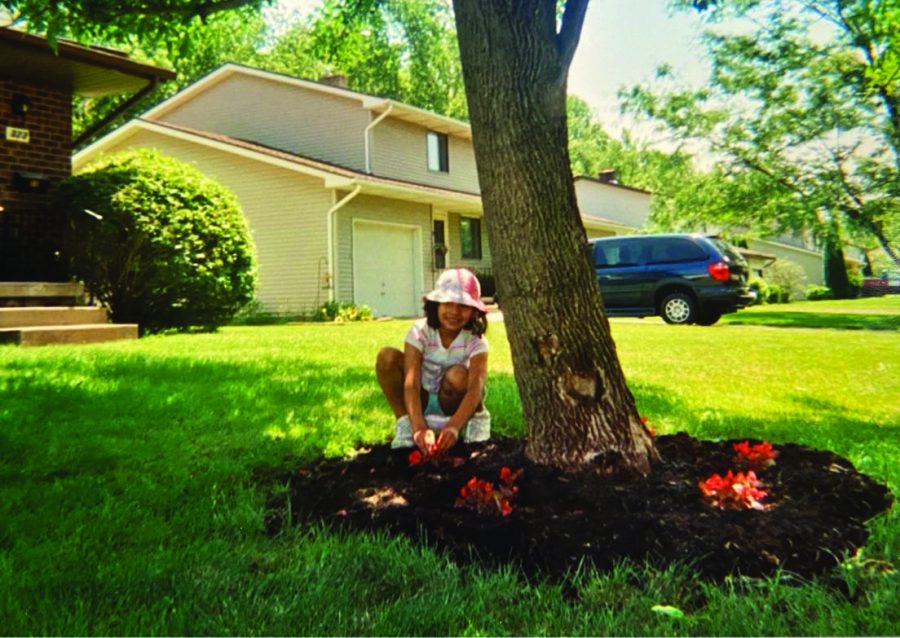flower power
junior finds joy in gardening
For junior Ariana Siddique, her first experience with gardening was volunteer work, and her “green thumb” has since stuck with her.
“I used to live in New York by the college called SUNY Brockport,” Siddique said. “They had a garden for a girl who was hit by a drunk driver. It was a memorial. They would have volunteers come and help garden every summer. It would just be a bunch of kids, a lot of college students, a lot of professors. That was when I was 4 or 5.”
The university’s garden featured a vast variety of plants.
“They had a lot of apple trees, rosemary, all sorts of different bushes and a lot of rare species or ones that are nearly going extinct,” Siddique said. “They had chili plants that they’d grow and different types of peppers, tomatoes — things like that.”
The Siddique family chose to contribute to the garden so they could help serve the local area.
“I decided to garden there because I felt like it was a good cause,” Siddique said. “Also, it was a way to be a part of the community, and it’s a very small college town so it was nice to be involved.”
This initial opportunity to garden gave Siddique the chance to inform herself about the subject.
“I learned about gardening because a lot of the faculty members would help,” she said. “They showed us a proper way to plant things, pot them, take care of them.”
In addition to a communal garden, the Siddique family had a more modest one of their own.
“We had a mini garden in front of our house,” Siddique said. “It was just a flower garden [that] had tulips and stuff, so it wasn’t very fancy.”
Since moving from New York, Siddique’s garden has transformed and changed throughout the seasons.
“My garden now isn’t very big,” Siddique said. “Normally I [garden] in the spring or summer, so everything is dead [right now]. There’s nothing in it. I didn’t really take care of it after school [started].”
Because her education takes up so much of her time, Siddique had to find ways to make her garden easier to care for. Part of this simplification includes the growing of mostly perennials, which are planted in the spring or early summer.
“They’ll bloom, and then over winter, they’ll be dead — but they’re not actually dead,” Siddique said. “Their seeds and roots will still be there. In spring, you don’t have to plant them again — they’ll bloom on their own. We [also] have sprinklers that do the watering for me, so all I do is put in natural fertilizers once a week — like coffee beans.”
Additionally, Siddique purchases what she needs at the store, which alleviates the complexity of the gardening process.
“I buy my seeds from Cafe Equinox,” Siddique said. “I don’t propagate my seeds except for basil. It’s really easy — you just put it in water and let it do its photosynthesis.”
Out of all her plants, Siddique has a specific one that she finds the most beautiful.
“I have an umbrella plant,” Siddique said. “It’s my favorite because it’s very leafy, and it’s very pretty.”
Despite the ease and beauty of her garden, there are still improvements Siddique would like to make.
“If I could change anything about my garden, I would definitely make it bigger — it’s very boring and plain and very amateur,” Siddique said. “I would probably do more things I can actually use — more basil, which is pretty easy to grow, or more tomatoes. Ideally, I would use it for things like food.”
Siddique emphasizes the stability that gardening requires.
“My tips for gardening [are] to keep at it,” Siddique said. “It’s really easy to fall out of a routine, but consistency is key.”

Stephanie Kontopanos is a senior and the assistant editor of The Tiger Print. This is her third year on staff and her second year being the Newspaper Grandma...




